I’ve always loved the sea, both from above and under, spending hours snorkeling and, at least when the water was clear enough, practicing brief apnea dives. This year, I took my passion to the next level by earning my first scuba diving license. The experience was transformative, allowing me to explore deeper waters and discover the underwater world in a whole new way. Now, equipped with my scuba diving skills, I’ve started to use my Nikonos equipment even more for their actual intended use, not just as a rugged camera that you can throw to a rock.
During my first dives I brought my faithful Nikons V with me, as you may know it’s reliable above any condition but It was lacking of a very important feature, at least from my point of view: Autofocus.
That’s why I’ve invested and bough a near condition Nikonos RS system, complete with 2 lenses (28mm and 50mm) and the SB-104 Speedlight Unit.
SB-104
The SB-104 Speedlight, that’s the focus of this article, it’s a huge underwater flash unit that has got many feature set but has got a peculiar flaw (at least from my point of view): The dedicated Rechargeable Batteries SN-104.
Those batteries are:
1- Even rarer that the camera itself
2- If you found one the cost at least € 100.00 each
3- NiCd technology
4- Requires a dedicated (and bulky) battery charger
5- Last just a roll
As you can see there are some disadvantages, while other SB units allow you to use either disposable or rechargeable AA batteries the SB-104 unit can be powered only by their own SN-104. Another problem is that those batteries were manufactured in the 90’s, even if you find them new their performance are so degrade that you risk to buy an expensive brick.
So, how can we solve this issue? the Flash unit is actually amazing but if it’s not reliable it is useless and actually jus a dead weight that you carry with you underwater.
Being an electronic engineer and hobbyist comes handy sometimes, here you’ll see what you could do in order to craft a replacement battery strong enough that it wouldn’t suffer from the high peak current (you’ll see in a while) and has got enough juice for more than 5 rolls.
1st: Battery characteristics
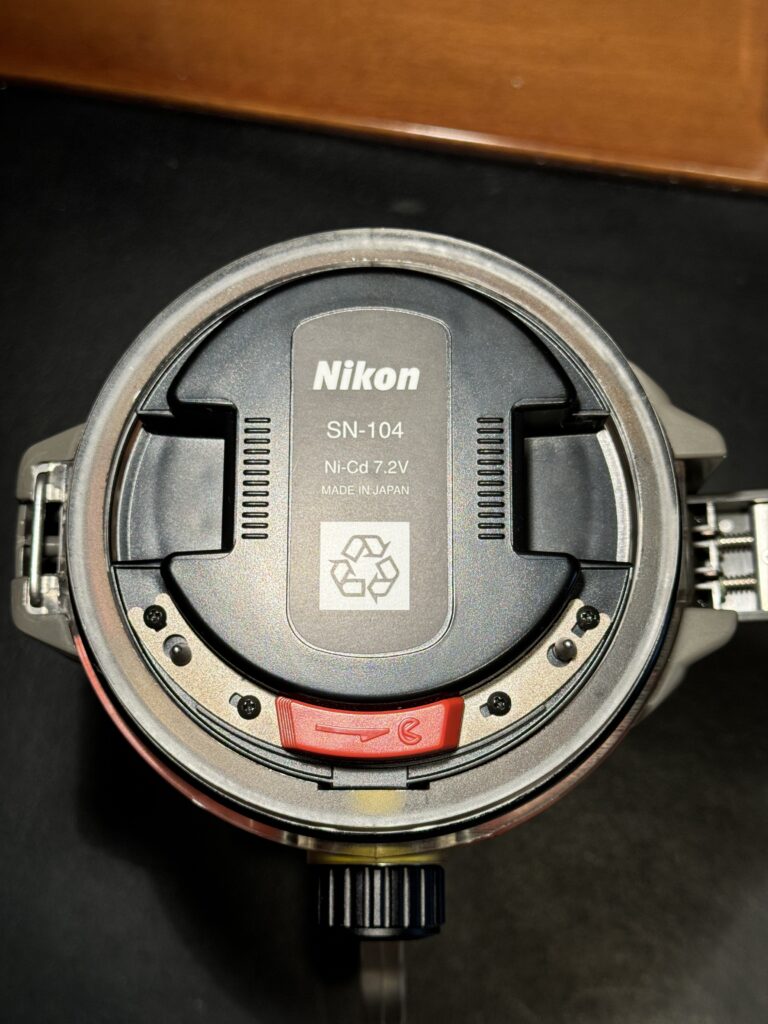
The original SN-104 battery is a 7.2 V NiCd battery pack, this means it’s made by 6 single 1.2 V NiCd unit connected in series. Now, 7.2 V is the nominal voltage, NiCd cell voltage is actually 1.4 when fully charged, this means that the overall battery pack voltage is 8.4 V at full charge. This is very important as we can set this voltage as the maximum threshold for our replacement battery.
8.4 V sounds great actually as it the exact same value that you can find on 2 fully charged LiPo Batteries (4.2 V) connected in series.
Now the tough part, battery discharge rate and capabilities: NiCd have a much lower power density than other technologies but they are good at one thing: deliver high amount of current without too much hassle, therefore the new battery pack must be able to deliver high amount of current without incurring in damages of overheating.
2nd: Battery physical size
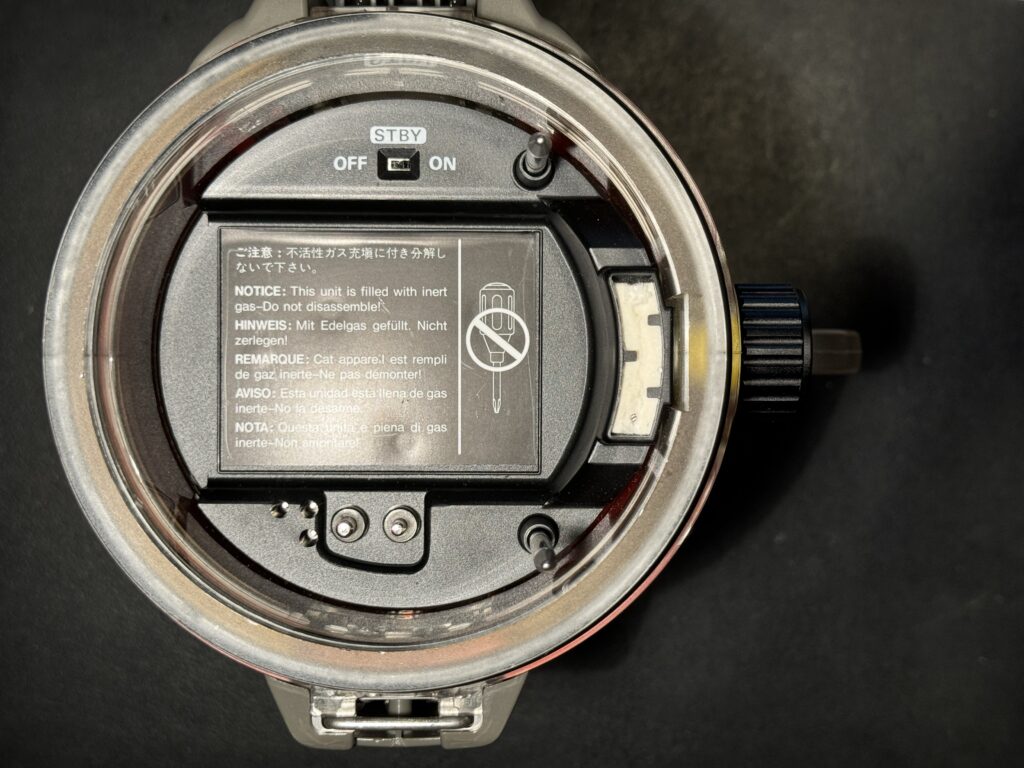
The SB-104 Battery compartment and the SN-104 Battery pack are designed for a perfect fit. There is space actually but we need to be careful to fill it correctly to avoid any punctures on the new battery an to keep the original size.
Battery Design
After all the measurements (more like trial and error) it seems like there is a standard battery size that is fully compatible with the compartment: 18650
The compartment allows you to place 4 or them, and this is actually great as we can arrange them in a 2S2P configuration so we can achieve both the desired voltage and double up the battery capacity.
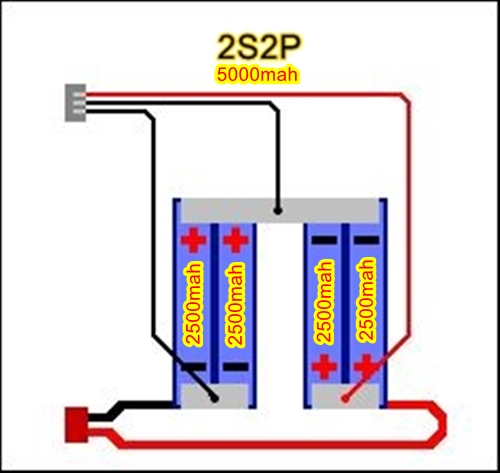
Choosing the right batteries
Now, a very important aspect: The flash unit needs huge current when charging up its internal capacitor, and by huge I mean 40 A (Amperes). This is a key aspect, choose the right battery cell, do not go for cheap ones that delivers just a 10th of their promised performance. My choice happened to be 4 Samsung 18650 2500 mAh cells, with a discharge rate of 26C each. The discharge rate is what’s important for you, you can convert it to Amperes (A) just by multiplying that number by the capacity, in my case each cell is able to provide 65 A of current each. that’s already a great number, this means that if I just connect 2 of them in series The battery pack will handle the flash unit recycle phase.
Personally I’d like to play it safe and have some margin, henge I’ve decided for a 2S2P configuration as I can achieve:
1- Doubling the battery pack capacity (hence it’s life)
2- Halve the discharge current of every cell as each one has to deliver just 20 A instead of 40 A
Some measurement
For the one of you that like some more actual measurements here you can see the measurements setup and 2 Oscilloscope Screenshots.
Those numbers are scary!
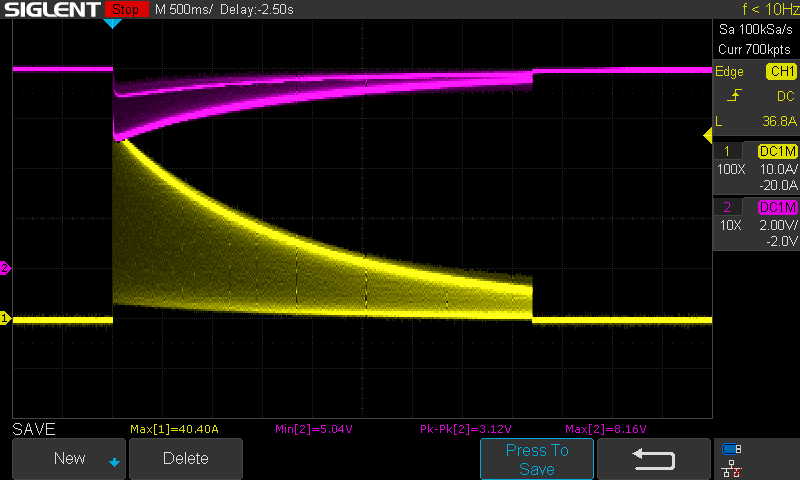
Here you can actually see the whole recycle phase after a full power test. You can see that the recharge time is 4.25 seconds long.
I’ve carried out some later test, at 1/16 of power the recharge time is 0.6 seconds while the flash is already able to fire again.
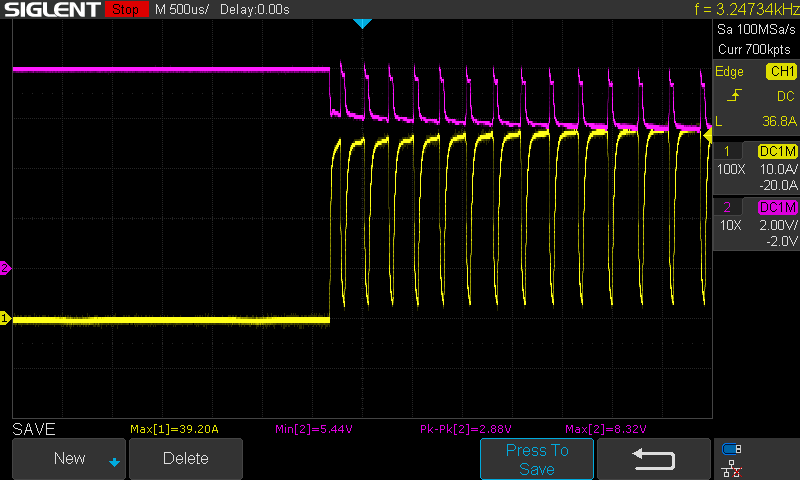
here you can appreciate the high current drain at the very first stage. No wonder why Nikon decided to use NiCd cells on this unit, the current is quite high and hard to be handled by Alkaline AA batteries (maybe disposable lithium ones, but I won’t investigate those)
End result
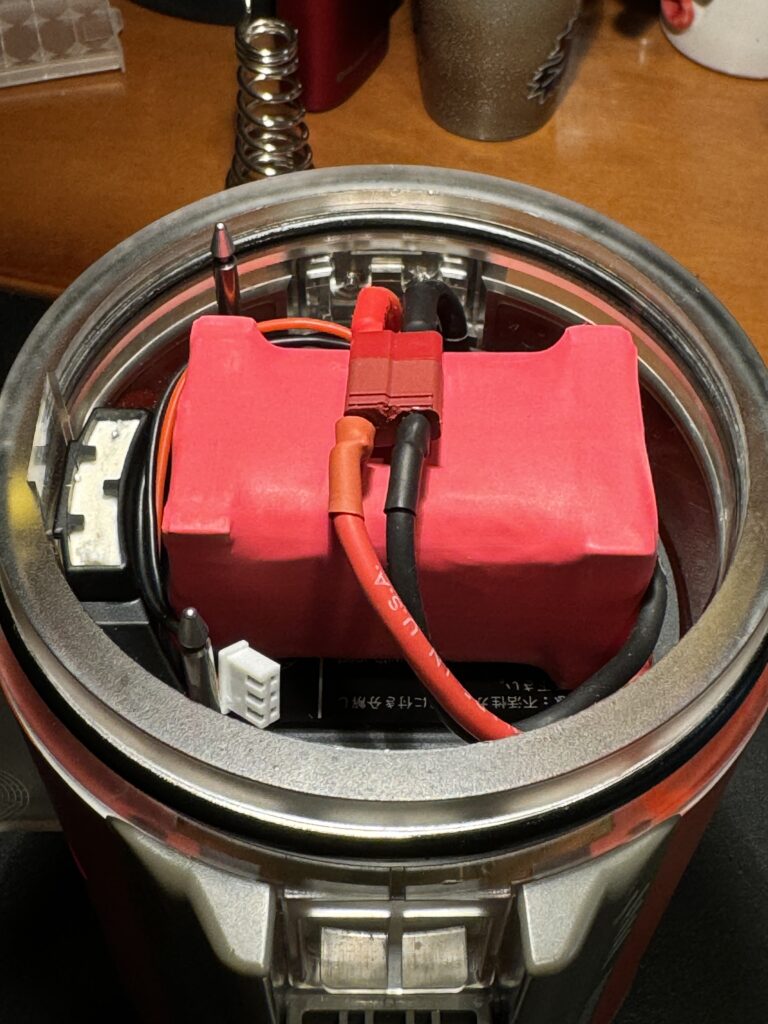
So, did I managed to make it work? YES, the Speedlight works flawlessly now, here shots from my latest trip in the red sea with my Nikonos RS
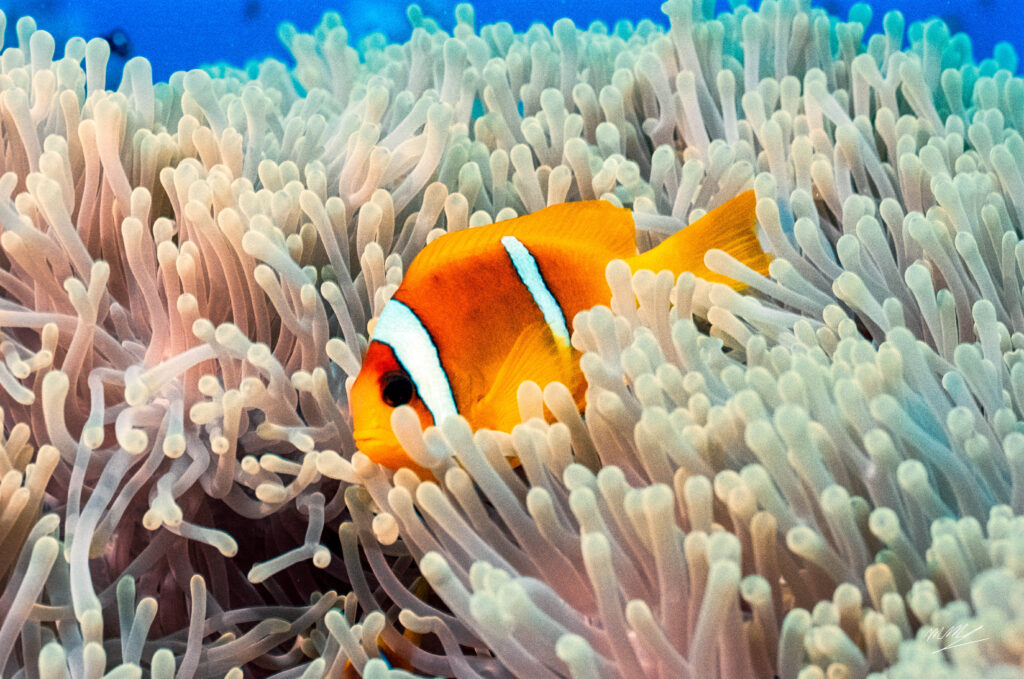
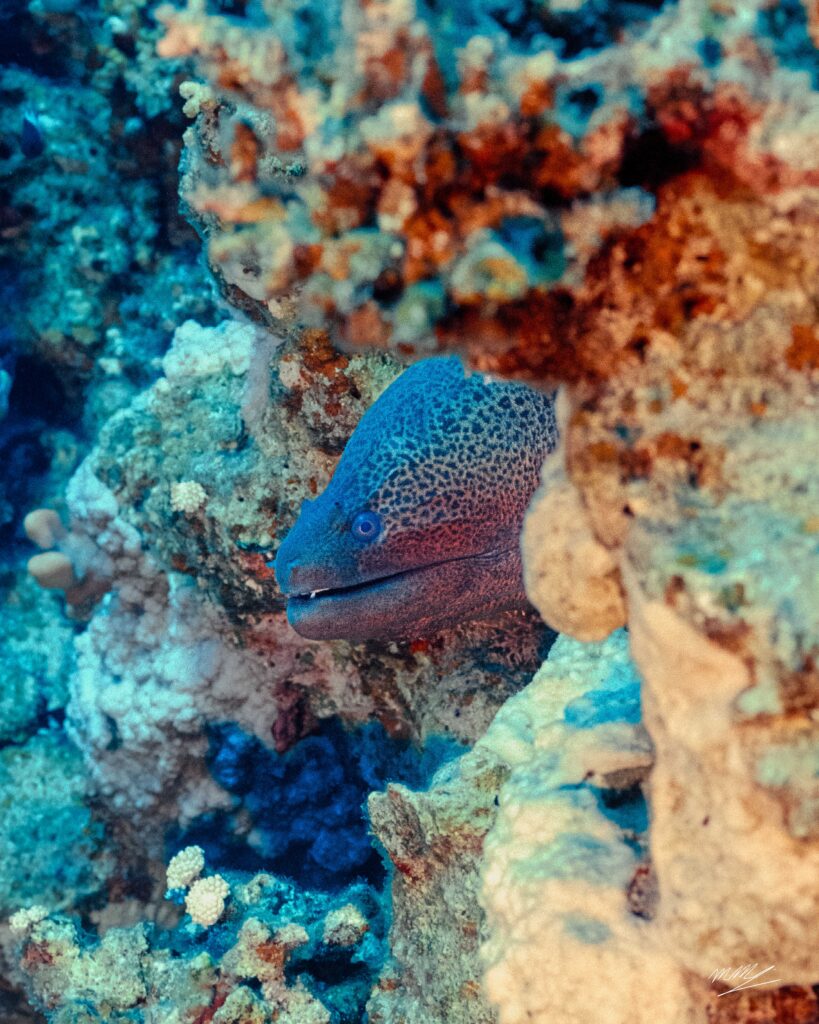
Here is a reference for those who still has got the mighty SB-104, you can also find the user manual for the flash unit.
Hope these information will be useful for the lucky of you that still use this marvellous piece of technology.
Ciao
Share this post:
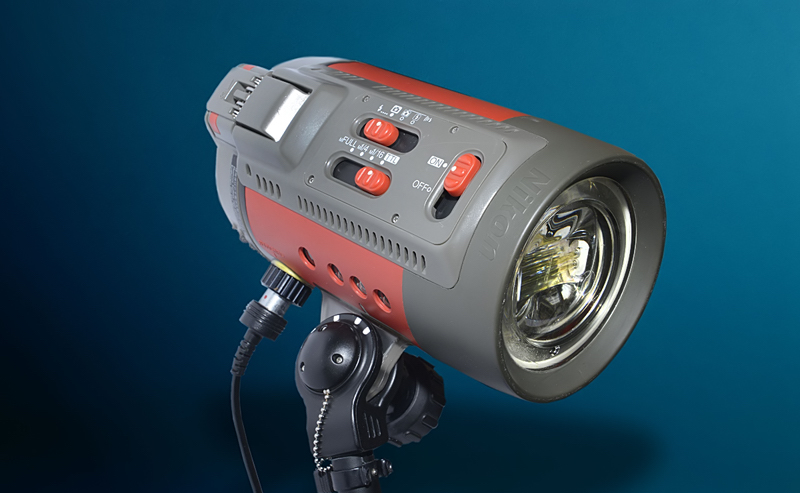
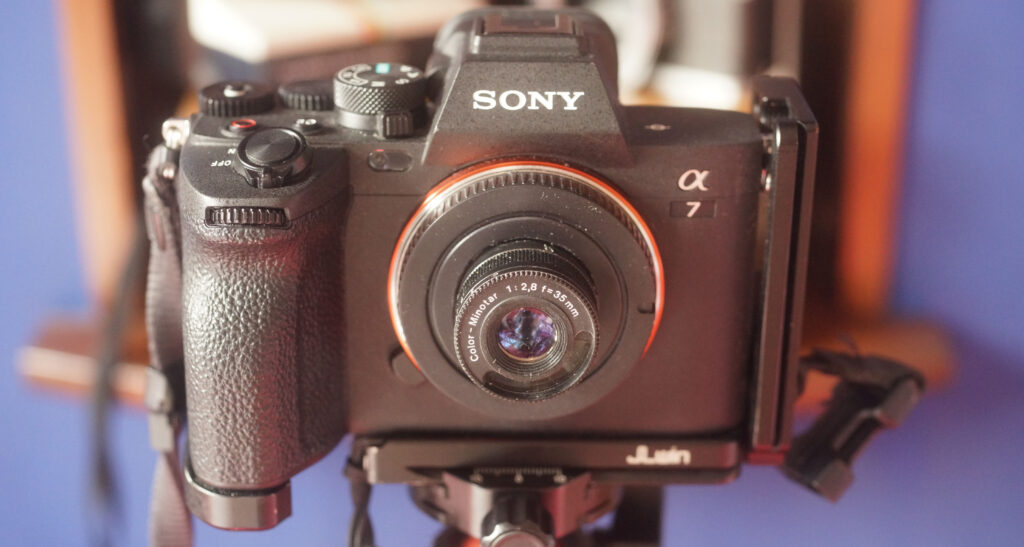


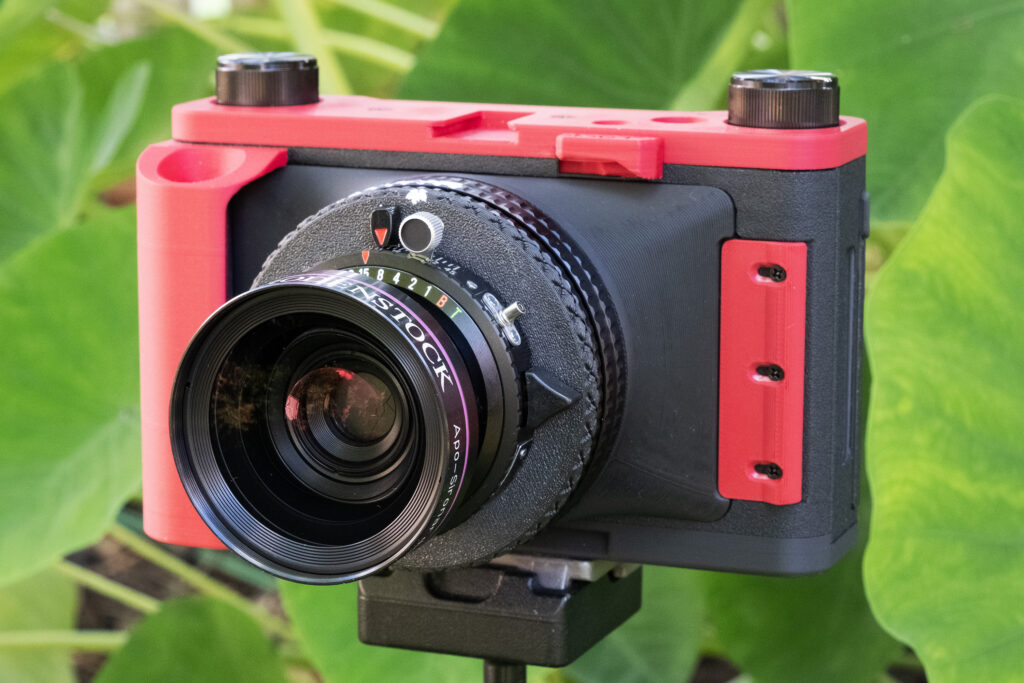




Comments
Daniel Emerson on Nikons SB-104 – A Substantial Battery Upgrade
Comment posted: 02/10/2024
Enjoyed the read and learner a lot about batteries. Another example of the diverse fields of innovation that photographers bring to their craft and make 35mmc a must go to site. Thanks!
Regards
Daniel